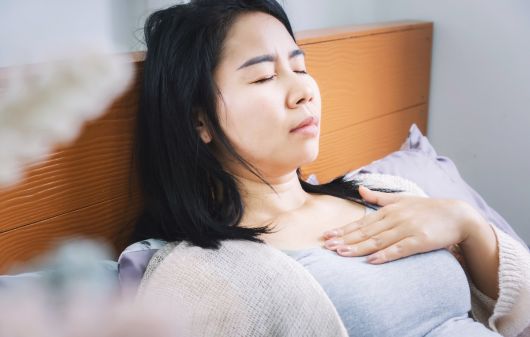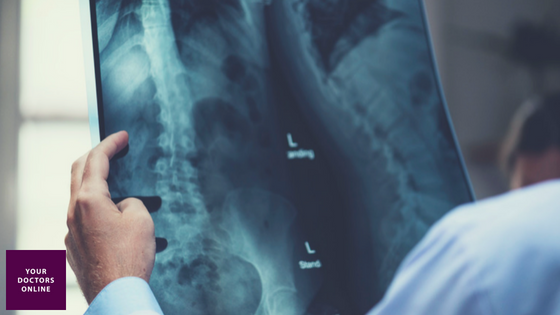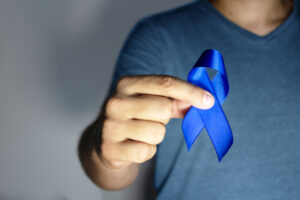Overview
Misconceptions often lead many to fear that breast soreness signals breast cancer. However, it’s essential to dispel this anxiety: while breast pain can indeed be a symptom, it’s rarely indicative of breast cancer. Instead, it’s more likely to stem from various benign breast conditions. Breast pain manifests in different forms – from a dull ache, heaviness, or tightness to a burning sensation in either breast or both, along with overall tenderness. This discomfort, also referred to as mastalgia, mammalgia, or mastodynia, is a prevalent issue, particularly affecting women. When associated with the menstrual cycle, it’s termed cyclical mastalgia.
Whether cyclical or not, breast pain is more commonly associated with benign conditions than with breast cancer, as emphasized by the Breast Cancer Foundation. Let us shed light on the prevalence of breast pain, its diverse causes, and the importance of understanding its benign nature in fostering proactive breast health awareness.

Are you experiencing a burning sensation in your breast?
It could be due to hormonal changes or something more serious. Speak to a doctor at Your Doctors Online.
Get a prescription for as low as $19/visit!Why does my breast have a burning sensation?
“Various factors, including hormonal changes, injury or trauma, infections, nerve issues, or skin conditions, can cause a burning sensation in the breast. Mostly the cause is benign.”
Say Dr. Richard Honekar
Here’s a breakdown of various common cyclical and non-cyclical causes.
| Cyclical Causes (Age group 20s-40s) | Non-Cyclical Causes (Age group 40s-50s) |
| 1. Hormonal Changes: | 1. Infection: |
| – Menstrual cycle fluctuations | – Mastitis (breast infection) |
| – Pregnancy or breastfeeding | – Cellulitis (skin infection) |
| 2. Fibrocystic Changes: | 2. Inflammation: |
| – Benign breast changes | – Costochondritis (inflammation of rib joints) |
| – Fibroadenomas (non-cancerous lumps) | – Injury or trauma |
| 3. Mastalgia (Breast Pain): | 3. Nerve-related: |
| – Tenderness or sensitivity | – Pinched nerves |
| – Swelling or inflammation | – Neuropathy |
| 4. Breast Tenderness: | 4. Skin Conditions: |
| – Pre-menstrual Syndrome (PMS) | – Eczema or dermatitis |
| – Hormone therapy side effects | – Shingles (herpes zoster) |
| 5. Cysts: | 5. Other Causes: |
| – Fluid-filled sacs in the breast | – Breast cancer |
| – Allergic reactions | |
| – Medication side effects |
Breast Burning sensations in the right or left breast usually have similar causes. There is no differential diagnosis for the separate sides. Some of the common causes are discussed below.
Physiological causes of breast burning/ pain
Hormonal fluctuations
Cyclic breast pain correlates with menstrual cycles, triggered by hormonal shifts, notably the surge of estrogen and progesterone before menstruation.
Breast size
Breast pain may stem from the weight and size of the breasts, potentially leading to discomfort in the neck, shoulders, and back.
Breast structure
Changes in milk ducts or glands, as well as trauma from surgeries, can result in breast tenderness. Even after apparent healing, scar tissue from breast surgeries may cause lingering pain.
Breastfeeding
Breastfeeding-related problems like painful, cracked, or itchy nipples can cause breast pain. Mastitis, a painful inflammation usually brought on by bacterial infection and characterized by redness, heat, swelling, and discomfort in the afflicted breast, can result from blocked milk ducts.
Pathological causes of breast burning/ pain
Breast cancer
Rarely, breast pain can be a symptom of breast cancer, mainly if it’s persistent and not related to hormonal changes or other benign causes. It’s crucial to monitor any unusual or constant breast pain and consult a healthcare professional for evaluation.
Breast abscess
An abscess, a pus typically caused by a bacterial infection, can develop in breast tissue, leading to localized pain, redness, swelling, and warmth.
Inflammatory breast cancer
In many cases, there is no noticeable lump associated with this uncommon and aggressive kind of breast cancer. Instead, symptoms include thickening of the skin, redness, swelling, and breast soreness.
Breast cysts
These are fluid-filled sacs within the breast tissue.
Breast fibroadenomas
These benign lumps of glandular and fibrous tissue often feel firm and rubbery. While common among women aged 20 to 40, their exact cause remains unknown. Fibroadenomas may become tender before menstruation, necessitating evaluation by a physician for any unusual breast changes.

From hormonal fluctuations to infections, Your Doctors Online can help identify the root cause of burning sensations in your breast.
Get a prescription for as low as $19/visit!Neurological causes of breast burning/pain
Thoracic outlet syndrome
Compression of nerves in the thoracic outlet, the space between the first rib and the collarbone, can cause pain in the breast area.
Referred pain
Pain originating from organs or structures near the breast, such as the lungs, esophagus, or gallbladder, can be referred to the breast area, leading to discomfort.
Musculoskeletal causes of breast burning/pain
Costochondritis
Chest discomfort, including breast pain, can be caused by inflammation of the cartilage connecting a rib to the breastbone. This pain may get worse with movement or heavy breathing.
Muscle strain
Breast pain may arise from overuse or straining of the chest muscles, as in the case of intense exercise or heavy lifting.
Chest wall injury
Trauma or injury to the chest wall, including bruising or fractures, can cause discomfort or pain that may radiate to the breast area.
Physical activity
Engaging in strenuous activities that strain the chest area, such as heavy lifting, may contribute to breast soreness.
Other causes of breast burning/ pain
Medication effects
Certain hormonal medications, like contraceptives or specific antidepressants, can influence burning breast pain. Estrogen and progesterone hormone therapies may also induce soreness as a side effect.
Fatty acid imbalance
Discrepancies in fatty acid levels within cells can lead to heightened breast sensitivity.
Heart conditions
Some heart-related issues, such as angina or myocardial infarction (heart attack), can cause chest pain that may be perceived as breast pain.

Are you worried about stinging pain or burning in your breast?
Connect with Your Doctors Online for a fast and personalized consultation.
Get a prescription for as low as $19/visit!How do you stop burning pain in your breast?
By using well-fitting bras and OTC (over-the-counter) medicines, cyclical breast pain can be resolved in most situations. Breast discomfort that cycles is frequently unpredictable; it could go away over time and then return on occasion.
Many patients find relief from their condition by learning they have cyclical breast discomfort rather than a more severe illness. As a result, they find it easier to manage their condition.
Women who experience non-cyclical breast discomfort may require therapy to address the underlying cause. For example, antibiotics may be administered to treat infected mastitis.
Home remedies for breast discomfort
- Put on a bra that fits comfortably during the day.
- Evening primrose oil has many women swearing by it. However, an American Journal of Obstetrics and Gynecology investigation revealed that evening primrose oil had no advantages—a reliable Source regarding Breast Pain. Individuals with epilepsy, individuals who are contemplating a pregnancy, and pregnant women should not take evening primrose oil without first consulting their physician.
- Use over-the-counter (OTC) drugs such as ibuprofen or acetaminophen (paracetamol, Tylenol) to ease the discomfort.
- While you sleep, put on a soft-supporting bra.
- Wear an excellent sports bra when working out.
Specific topical NSAIDs (non-steroidal anti-inflammatory medicines) can be applied directly to the sore spots, including gel ibuprofen or diclofenac. NSAID gels should not be used to open wounds. “Topical” refers to applying it straight to the skin.
Caffeine, coffee and breast pain
A study which was published in The Nurse Practitioner found that “Limiting caffeine intake is a useful strategy for treating fibrocystic disease-related breast pain.”
Smoking and breast pain
Women experiencing breast pain are advised to quit smoking by several health organizations, hospitals, and health authorities. The claim is that smoking increases the risk of inflammation and nicotine narrows blood vessels.
Medications for breast pain
The doctor might suggest a prescription medication if the patient’s breast discomfort is severe and none of the previously mentioned treatments worked.
The following drugs may be able to lessen breast discomfort symptoms:
Bromocriptine
The main conditions that can be treated with bromocriptine are those caused by excess production of prolactin, an essential hormone in breast milk production. By lowering prolactin levels and minimizing breast tissue edema, it can also aid in the relief of breast discomfort. Headache, vertigo, and nausea are typical adverse effects. Patients should carefully follow their doctor’s instructions and report any adverse effects.
Danazol
A synthetic steroid derivative called Danazol is used to treat fibrocystic breast disease, a condition that causes non-cancerous lumps to grow in the breasts. It reduces breast pain and swelling by inhibiting the production of specific hormones related to the menstrual cycle. On the other hand, it can also result in adverse effects like irregular menstruation, weight gain, and acne. A healthcare professional must do routine monitoring to guarantee its efficacy and safety.
Antidepressants
Many antidepressants, particularly serotonin-norepinephrine reuptake inhibitors (SNRIs) and selective serotonin reuptake inhibitors (SSRIs), reduce breast discomfort. They could be able to lessen symptoms by improving mood and altering how pain is perceived.
Tamoxifen
One selective estrogen receptor modulator (SERM) that is used for the treatment of breast cancer is tamoxifen. It functions by obstructing estrogen’s effects on breast tissue, which may aid in halting the development of hormone-sensitive breast cancer cells. Furthermore, it has been shown that tamoxifen occasionally relieves mastalgia or breast pain. On the other hand, it may also raise the possibility of some adverse effects like vaginal discharge, blood clots, and hot flashes.
Hormonal therapies
In cases where breast pain is hormonally mediated, hormonal therapies such as oral contraceptives, hormone replacement therapy (HRT), or gonadotropin-releasing hormone (GnRH) agonists may be considered to regulate hormonal fluctuations and alleviate symptoms.
Toremifene
Similar to tamoxifen, toremifene is a selective estrogen receptor modulator (SERM) that is mainly used to treat metastatic breast cancer. It can be used off-label to treat breast pain, just like tamoxifen. By preventing the effects of estrogen on breast tissue, toremifene helps lessen discomfort and inflammation. On the other hand, it could also result in adverse symptoms like nausea, vaginal discharge, and hot flashes. A healthcare provider must closely monitor things to guarantee their safe and efficient use.
Lidocaine, a local anesthetics doctor’s
By numbing the afflicted area, topical treatments containing prilocaine or lidocaine can temporarily relieve localized breast pain. Usually, these compositions are administered straight to the skin that covers the painful location.
Goserelin
A gonadotropin-releasing hormone (GnRH) agonist called goserelin is used to treat tumors that are sensitive to hormones, such as breast cancer. Goserelin can reduce tumor size and ease breast discomfort sensations by inhibiting the production of progesterone and estrogen. It is injected beneath the skin, and side effects include weariness, hot flashes, and weakening of the bones are possible. During goserelin therapy, regular monitoring and follow-up with a physician’s provider are crucial.
Muscle relaxants
For breast pain attributed to musculoskeletal issues or muscle tension, muscle relaxants such as cyclobenzaprine or methocarbamol may be prescribed to alleviate muscle spasms and discomfort.
Gabapentin or pregabalin
These medications, commonly used to treat neuropathic pain conditions, may be beneficial for breast pain characterized by neuropathic or nerve-related symptoms such as a burning feeling in the breast or tingling sensations.
Should a woman be on contraceptive pills, the doctor may contemplate adjusting or changing the prescription. Similarly, adjustments to hormone replacement therapy dosage may be considered to manage breast pain effectively.
Is stinging breast pain normal?
While stinging breast pain can sometimes be attributed to regular physiological changes or referred sensations from adjacent structures, it’s essential to consider other potential causes, including nerve-related issues, skin conditions, breast infections, or, rarely, breast cancer.
Stinging pain in the breast can occur for various reasons and may or may not be considered normal, depending on the underlying cause. A painful feeling in the breast might occasionally be a transient, benign indication of hormonal changes, such as those that occur throughout the menstrual cycle. Hormonal changes can lead to breast tenderness and discomfort, including sensations of stinging or sharp pain, which are generally considered normal and often resolve on their own.
To ascertain the underlying reason, a healthcare provider should be consulted if the stinging breast pain is severe or chronic. Disorders, including mastitis (inflammation of the breast tissue), breast abscesses, nerve problems, or skin disorders affecting the breast area, can also be linked to stinging sensations in the breast. Additionally, stinging breast pain may be a symptom of more severe conditions, including breast cancer. While breast pain is not typically a common symptom of breast cancer, it can occur in some cases, particularly if accompanied by other concerns such as a lump, changes in breast size or shape, skin changes or nipple discharge.
Breast pain that is mild or sporadic is widespread and typically not a reason for alarm. There are a few circumstances, though, when someone has to get medical attention.
- Severe chest pain
- Stabbing pain in the breast
- A tightness or fullness in the middle of the chest that lasts longer than a few minutes or disappears briefly before returning
- Chest pressure
- Back, neck, jaw, stomach, or one or both arms hurting or experiencing discomfort.
- Trouble breathing, with or without chest discomfort
- A cold sweat, lightheadedness, or nausea
- Loss of consciousness
If breast discomfort is severe, sudden, or does not go away on its own, it is also imperative that someone sees a doctor right once.
How long does it take for mastalgia to go away?
The duration of mastalgia, or breast pain, can vary depending on the underlying cause. In many cases, mastalgia is temporary and may resolve on its own or with simple interventions. Here are some general timelines based on common causes:
Cyclical mastalgia
Breast pain that is related to hormonal changes, such as that experienced during the menstrual cycle, often resolves on its own within a few days to a week after the hormone levels stabilize.
Non-cyclical mastalgia
Breast discomfort that is not associated with hormonal fluctuations could be brought on by a strained muscle, an accident, or adverse drug reactions. Depending on the underlying cause, non-cyclical mastalgia might last for various lengths before clearing up.
Mastitis
Breast pain may require antibiotic treatment due to an infection such as mastitis. Most cases, mastitis resolves within a few days to a week with appropriate treatment.
Fibrocystic changes
Over time, breast pain linked to fibrocystic alterations may come and go. Modifying one’s lifestyle to include less caffeine and the use of supportive bras can help control the pain.
Breastfeeding-related pain
Breast pain that occurs during breastfeeding, such as due to engorgement or improper latch, should improve once the underlying issue is addressed. This may take a few days to a week.

Suffering in silence could be risky. Consult now
Get a prescription for as low as $19/visit!Consult a doctor
Determining when breast pain warrants concern can indeed be challenging, but it’s crucial to pay attention to sure signs that may indicate a need for medical evaluation. If you experience breast pain that persists for more than a few weeks, mainly if it’s localized in one spot or keeps worsening over time, it’s essential to seek medical attention. Additionally, if the discomfort interferes with your daily activities, such as sleeping, exercising, or performing routine tasks, it’s prudent to consult a doctor. While occasional breast pain is often expected and may be related to hormonal fluctuations or minor musculoskeletal issues, persistent or severe pain warrants evaluation to rule out underlying conditions such as breast infections, nerve-related matters, or, rarely, breast cancer. Therefore, it’s essential not to ignore persistent or worsening breast pain and to seek timely medical assessment for proper diagnosis and management.
FAQs about burning sensation in the breast
Breast cysts rarely can cause a burning sensation. This sensation can arise from compression or pressure on surrounding breast tissue and nerves as the cyst enlarges or becomes tense. Inflammation within or around the cyst, hormonal changes, or infection can also contribute to the discomfort, including burning sensations. While burning sensations associated with breast cysts are not typical, they can occur in individuals experiencing localized pain, redness, swelling, or warmth in the affected area.
Breast pain that is severe, sudden, persistent, and accompanied by other symptoms like nipple discharge, changes in breast size or shape, lumps, redness, or skin changes (like dimpling) can be alarming and should be evaluated by a doctor promptly to rule out severe conditions like breast cancer.
Yes, fibrocystic breasts can sometimes cause a burning sensation, although it’s not as common as other symptoms like breast tenderness, lumpiness, or pain. The burning sensation is usually mild and intermittent, often related to hormonal changes in the menstrual cycle.
The term “mastalgia” originates from the Greek words “mastos,” meaning breast, and “algos,” meaning pain. therefore, “mastalgia” literally translates to “breast pain.” It is usually used in medical terminology to describe various discomforts or pains experienced during the break. The term encompasses a range of sensations, including tenderness, soreness, aching, or sharp pain, and is often used in discussions surrounding breast health and related medical conditions. Breast tissue itself is usually where mastalgia, or breast discomfort, is felt. Its severity can vary from moderate to severe, and it can affect one or both breasts. Breast pain could be localized or widespread.






